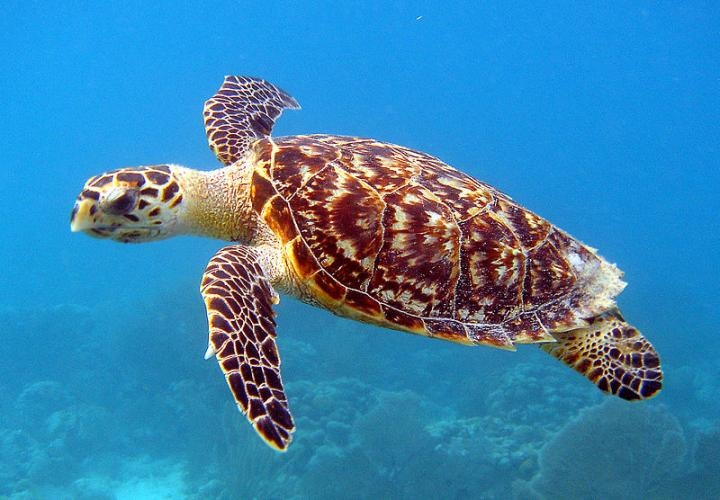Dec 17 2018
Hawksbill turtles are not the only marine turtles vulnerable by the destabilizing effects of climate change, but a new research from scientists at Florida State University reveals that this critically endangered species could be at higher risk.
 Hawksbill turtle nests are under threat from rising air temperatures. (Credit - Wikimedia Commons)
Hawksbill turtle nests are under threat from rising air temperatures. (Credit - Wikimedia Commons)
In a research published in the journal PLOS ONE, scientists from FSU’s Department of Earth, Ocean and Atmospheric Science propose that estimated increases in air temperatures, sweltering solar radiation, and rainfall inundation could considerably decrease hawksbill hatching success at a selection of key nesting beaches.
Earth’s history overflows with instances of climate shifts, but scientists say today’s transforming climate, coupled with relentless human development, endangers hawksbills and other sea turtles in new and shocking ways.
Marine turtles have been around for millions of years, and during this time they have adapted to substantial climatic changes. In the past, they have adapted by shifting their nesting grounds and nesting season to align with more favorable conditions. However, increasing impacts to nesting habitats from coastal construction, storms and sea level rise are jeopardizing their ability to adapt.
Mariana Fuentes, Study Co-Author and Assistant Professor of Oceanography
To assess climate change’s effects on hawksbill hatching success, FSU scientists examined over 5,000 nests from the five Brazilian beaches where a majority of the region’s hawksbill nesting happens. The team concentrated mainly on five climatic variables—air temperature, solar radiation humidity, rainfall, and wind speed—so as to render a more detailed model of the various and subtle effects of a changing climate on the delicate incubation process.
“Research is lacking on how climate change may influence hawksbills, and this population in particular,” said former FSU graduate student Natalie Montero, who led the research. “We chose to study how climate change may impact hatchling production because significant changes to how many baby marine turtles are born can dramatically alter population stability.”
As reptiles, sea turtles’ body temperature regulation depends on external sources of heat. That makes hawksbills and their cousins particularly dependent upon and responsive to air temperature. Nowhere is that sensitivity more obvious than in sea turtle nests, where extreme temperature variations can influence egg incubation, determine hatching success, and dictate sex ratios.
For certain marine turtle species, rising temperatures may not essentially mean less successful incubation. For instance, a research from Montero and Fuentes published earlier this year showed that, for loggerhead turtles in the temperate nesting beaches of North Florida, varying conditions could yield potential short-term increases in hatching success by 1 to 7.6%.
The outlook for the hawksbills, however, is not as positive.
Montero and Fuentes learned that rising air temperatures along with increased rainfall and solar radiation are estimated to decrease overall hatching success at the Brazilian nesting sites by up to 11% by the year 2100. Higher temperatures may warm nests more than the threshold for healthy incubation, they said, and more rainfall could saturate the soil and smother the embryos.
If the turtles do incubate fruitfully and hatch, they then have to contend with high levels of solar radiation, which could bake the sand and lead to the nests caving in—a major danger for the hatchlings as they seek the shelter of the open sea.
While that may look like a terrible and difficult future for a species whose numbers are already declining, Montero said there is still time for humans to rectify the situation to some extent.
“Humans can help marine turtles in many ways,” she said. “Reducing coastal construction and protecting more coastal habitat will help ensure present and future nesting habitat is available. Reducing human impacts on dune structure and beach vegetation is also important. Additionally, reducing trash and microplastics on the beach can create a higher quality nesting and incubating environment.”